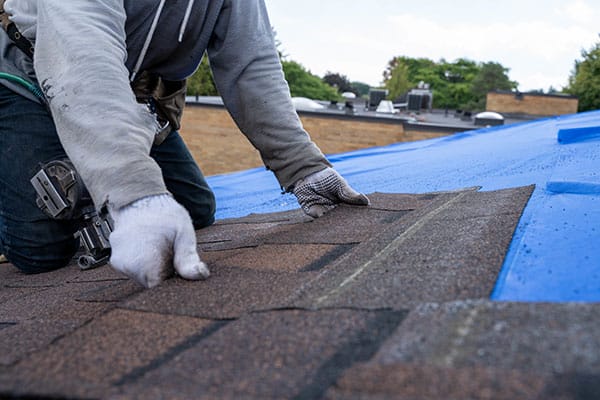Determining whether your roof needs replacement can be a daunting task. However, with a few simple steps, you can assess the condition of your roof and decide whether it’s time for a change. This FAQ will guide you through the signs to look out for.
Inspect Shingles for Damage
Check for cracked, curled, or missing shingles as these are clear indicators that your roof may need attention. Shingles are your home’s first line of defense against weather elements, and their deterioration can expose the underlying layers to moisture, hail, and UV rays, causing further damage. According to Bill Ragan Roofing, missing or damaged shingles are noticeable red flags that your roof is aging or has suffered weather-related damage.
If your shingles are lying flat against the roof without curling edges or bald spots, they are likely in good condition. However, noticing granules shedding from shingles often means they are reaching the end of their lifespan. It’s recommended to check gutters and downspouts for a collection of granules which, as noted by Fortified – A Program of IBHS, can serve as warning signs for significant aging or weather damage.
Moss or algae growth on shingles not only affects aesthetic appeal but can also pave the way for moisture retention issues. As emphasized by The Yale Ledger, this harmful growth can indicate that your roof isn’t draining effectively, potentially leading to deeper structural problems.
Look for Leaks and Water Damage
Water stains on ceilings or walls can be signs of a leaking roof. These need immediate attention to prevent further damage. Leaks are more than just a minor inconvenience; they can introduce mold, mildew, and even lead to electrical hazards. As detailed by Westfall Roofing, consistent water leaks demand a thorough inspection to identify and rectify the root cause.
Furthermore, exploring the attic for signs of sunlight or water stains can reveal areas where the roof’s integrity has been compromised. Checking for moisture marks, damp rafters, or visible streaks in this area is essential, contributing to a proactive maintenance routine. Kin Insurance suggests that these measures could prevent severe structural damage and prolong the lifespan of your property.
Examine Roof Age
Most roofs last between 20 to 25 years. If your roof has reached or surpassed this age, consider a replacement. This age range can vary depending on materials used and local weather conditions. Asphalt shingles usually last around 20 years, whereas materials like metal or tile can extend beyond this timeframe. Referencing Ledger, understanding your roof’s material and installation date helps in determining when it is due for an upgrade.
It’s also important to consider the neighborhood trend for roof replacements, as homes built around the same time may face similar aging issues. If your neighbors are getting roof replacements, this could be a visual cue for similar needs at your own house.
Check for Sagging Roof Deck
A sagging roof deck is a serious issue indicating structural problems. This can be dangerous and requires professional assessment. Sag, often perceived as a ‘droopy roof’, suggests accumulated moisture or weakened support beams. Detecting this requires observing the roof lines from a distance. If the lines aren’t straight and appear uneven, immediate intervention is necessary.
Identified early, such structural issues can often be corrected before they cause irreparable damage to other parts of your home. If too much time passes before detecting the sag, irreversible damage might occur, requiring extensive repairs or replacement.
Assess Gutters and Downspouts
Examine gutters for granules and debris. Excessive granule loss is a sign that your shingles are deteriorating. This issue, as stated by Origin Roofing and Exteriors, could lead to reduced durability and life expectancy of your roof if not addressed promptly.
Blocked gutters, often filled with leaves, shingle debris, or small branches, impede proper drainage, leading to water pooling which can cause leaks or damage to the roof structure. Keeping these clean not only prolongs your roof’s life but also supports the efficiency of your entire home’s drainage system.
Conclusion: Keeping Your Roof in Top Shape
Evaluating the state of your roof doesn’t have to be overwhelming. By keeping an eye out for these warning signs and conducting regular roof inspections, you can ensure your home remains protected. If in doubt, always seek professional advice to ensure your roof is safe and sturdy.


